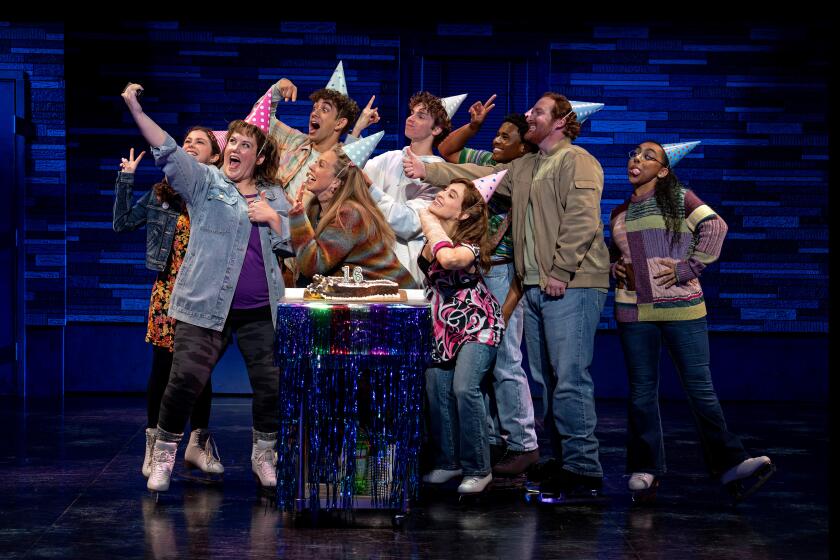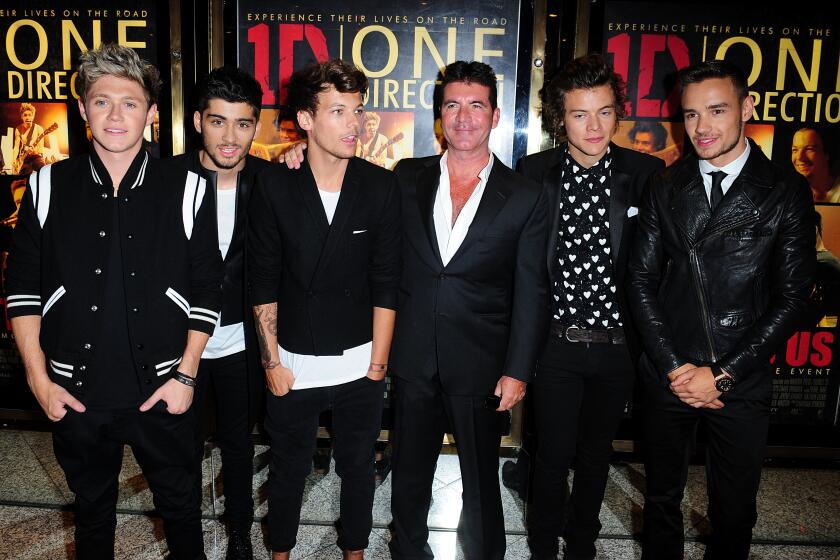A Mysterious Musical Malady Lingers On
At the age of 3, Gary Graffman climbed onto a piano bench the way ordinary toddlers straddled their rocking horses. By late adolescence the concert world beckoned. With speedy progress the Wunderkind went on to become one of the most popular American pianists.
Leon Fleisher was another child prodigy. An heir apparent to the great Beethoven interpreter Artur Schnabel, he was hailed as “the pianistic find of the century” after making his New York Philharmonic debut at 16.
But well into their international careers and at the peak of acclaim, these keyboard virtuosos fell prey to a strange malady affecting the ring and fifth fingers of the right hand. First Fleisher and then Graffman, within a few years of each other, began canceling concert dates. They had no choice. To play the standard repertory with brilliance takes 100% function with both hands.
Pianists with musculoskeletal disabilities have a lot of career re-thinking to do. The fickle finger of fate notwithstanding, there are many instrumentalists who have mastered the most technically intricate feats of musicianship only to be cut off from the physical capacity to exercise those accomplishments.
While Graffman and Fleisher are the best-known victims of what doctors still call “writers’ cramp” or “overuse syndrome,” the fact is that medical files overflow with hundreds of cases such as theirs--cases that remain anonymous because of the stigma. No one wants to count himself among the afflicted--especially when such counting spells unreliability, or worse, the end of concertizing.
“I had no choice but to come out of the closet,” says Graffman, referring to his high profile and the need to explain so noticeable an absence from the music scene. And in the 17 years since he has been playing one-hand repertory only--his Hollywood Bowl date on July 17 lists Ravel’s Concerto for the Left Hand--the pianist has become an exemplar of a malaise that has ended the careers of harpists, flutists and other musicians, including other fine-muscle-control practitioners such as microsurgeons.
To date, this new branch of trauma inquiry known as music medicine has spawned a whole cadre of theorists and clinicians. While Graffman and Fleisher have investigated and worked with many of them, no real or reasonable cure stands on the horizon for either.
“But I am in the middle of a process known as life,” says Fleisher, taking a philosophic view of his career detour. “Meaning that I find myself gainfully occupied and quite active in regaining the use of my hand. With physical therapy I’ve seen a 65% improvement. It was just temporary, though. Neither did the surgery answer my problem, other than relieving the pain.”
What has vexed Graffman and Fleisher is commonly thought to be the tip of the performing iceberg. Countless others who are less severely afflicted and less well known suffer in silence, fearing rejection by music conservatories or artist managements. During the mid-1960s, a dark period that preceded this relatively enlightened one, “we were averaging one suicide a year,” says Gideon Waldrop, dean of the Juilliard School, commenting on the vicious cycle of physical and psychological distress to those in the highly competitive world of music performance.
Not that the path to help and recovery is now lined with welcoming signs. But at least the developing field has fostered greater knowledge of a virtuoso’s pitfalls.
In Graffman’s case, the culprit was an injury. Seventeen years ago at the Berlin Philharmonic, while playing the Tchaikovsky First Concerto, a notorious knuckle-buster, he encountered a particularly dull instrument, one that was “hideously unresponsive,” he says.
“On the last of three performances I gave the offending piano such a thwack that I sprained the knuckle of my right fourth finger. It was horribly painful.” But he got through. The pampering he did thereafter and the subsequent refingering of music--which he kept because it afforded him greater sound volume--brought on the involuntary clenching he continues to suffer.
After months of diagnosis and experimental therapy at Massachusetts General Hospital in Boston--the center of interdepartmental studies in music medicine where about 500 musicians have been treated--Graffman remains uncured. No matter how much biofeedback, massage and physical therapy he received from a team of neurophysiologists and orthopedic surgeons, the last two fingers of his right hand refuse to perform at the keyboard, although he speaks of being pain-free and “able to use chopsticks.”
But there are other options besides the medical ones, reputedly successful ones, that Graffman has not tried. Harpist Susann McDonald, whose handicap also resulted from a mid-performance injury, says she “suffered many years in silent depression” over her loss. Since coming upon techniques taught by piano coach Dorothy Taubman, however, “there’s been a marked improvement.
“I now have a full recording schedule,” says the eminent harpist who also teaches and gives master classes at Juilliard, USC and elsewhere. “It’s true that I don’t tour anymore. Live performances require a constant reliability and I’m uneasy about those because I can’t always count on my fingers.”
Taubman, who, from her Brooklyn studio has been analyzing for nearly half a century how faulty technique can lead to disability, takes a no-nonsense attitude.
“It’s not overuse that stresses the muscles and inflames the tendons and ultimately creates nerve compression (known as carpal-tunnel syndrome),” she says, “It’s misuse. I’ve been predicting the high incidence of pain and disability for 30 years and now my theory is being proven. Pianists are falling like flies. But until they understand the cause, rather than trying to cure the symptom, their problems will just increase. Even worse, these victims end up as teachers--passing on the same debilitating technique that robbed them of their goals.”
She is referring to the no-pain-no-gain axiom commonly subscribed to by teachers and students in quest of building a prize-winning technique. By pointing out, for instance, that the ubiquitous Czerny exercises instruct a pupil to strive for “active fingers and a quiet arm,” she spots the problem:
“All one does by following this advice,” says Taubman, “is create unhealthy tension between the flexor and abductor muscles. Proper technique must account for the study of motion. All parts of the playing apparatus must be combined, organized and timed expertly.”
She made a teaching video on which her students demonstrate a stress-free approach to the standard keyboard repertory. In it she explains why many performing artists--Horowitz, Horozowski, Myra Hess, Serkin, Arrau and Rubinstein, among them--enjoyed longevity while others fall victim.
“Of three students I inherited from another teacher,” she says, “only one did not have pain. What I found out was that the one without pain refused to do certain exercises that the others carried out faithfully.”
Fleisher agrees with Taubman, whom he has consulted over the years. “If I didn’t believe in the soundness of her theories or that she could help students prevent problems like mine,” he says, “I would never have invited her to Tanglewood,” the summer music school in the Berkshires that he directs.
“Although she is a little dogmatic. A friend once said that Dorothy would have you believe World War II was a minor altercation.
“It’s true that some handicaps are solvable through her approach--but not all. The trick is to extend one’s capacity without putting abnormal stress on the hand. The word virtuoso implies ease. The ability to shake it out of your sleeve.”
Helped by Taubman to understand the perils of the prevailing Russian technique, he says he faults using the fingers like hammers. Likewise “the whole macho thing,” with pianists working to build their big muscles the way football players do. But most important, Fleisher recalls when, rejecting the guidelines of Schnabel, he joined other pianists--including Graffman--to “play the big, flashy concertos faster and louder than anyone else,” spending as many as 10 hours a day at the keyboard.
“Up to a certain age it works,” he says. “Youngsters are oblivious. But I’d be curious to see if Midori, (the violin prodigy) won’t feel she has to play louder and faster and let that goal creep into her corpus.”
Even with all his insight, Fleisher has not chosen to test the ultimate power of Taubman’s technique, which, she says, would take three hours a day and would preclude the active schedule he’s been carrying for years: teaching at Peabody and Curtis.
Similarly, Graffman has filled in the gaps of his career with teaching master classes and studying Chinese. Naomi Graffman, an obsessive researcher in the area of her husband’s disability, once interviewed Taubman for an article she wrote and concluded that the piano coach’s theories “‘are somewhat fanciful.
“Gary talked to Taubman about his problem,” says Mrs. Graffman. “But if he were to follow her prescription he would be 87 before he could complete the regimen. It’s such a complicated state of affairs, what he has, that I don’t think any single approach could cure it.”
However, Taubman insists that his problem could be cured in a short time by learning new repertory via new technique, thus putting to rest the old disabling physical habits; testimony from many previously afflicted students bears out her theory. She also takes an understanding view of altered goals:
“After a considerable career such as Graffman’s I can appreciate the lessened desire to go back to the touring life--hotel rooms and airports--all that it takes to play a hundred concert dates per year.”
But Graffman mentions “waiting and watching to see” what his friend Fleisher does. “I don’t have the patience anymore to scavenge for a solution. It was too discouraging. But if Leon comes up with something that works I’ll gladly follow him down the path to success.” Meanwhile he refers students with problems to Taubman and advises them “to stop practicing when it hurts and go to a movie instead.”
Fleisher still pursues a cure, strongly out of curiosity. But with so much psyche-searching over the past 2 1/2 decades, his attitude has mellowed.
“My relationship to the keyboard is too strong to abandon,” he says. “Conducting was not the answer, besides the fact that I always felt self-conscious at the podium, acutely aware of my fanny waving in the breeze. I even tried sitting to conduct and it didn’t work, either.
“But none of this Pollyanna-sounding business is to the point. The problem must be solved by oneself--by finding the right therapy and initiating a process not unlike the one Norman Cousins wrote about in his book on conquering illness. It is, in the end, an illness. Something nearly everyone must deal with at one time or another.”
More to Read
The biggest entertainment stories
Get our big stories about Hollywood, film, television, music, arts, culture and more right in your inbox as soon as they publish.
You may occasionally receive promotional content from the Los Angeles Times.










